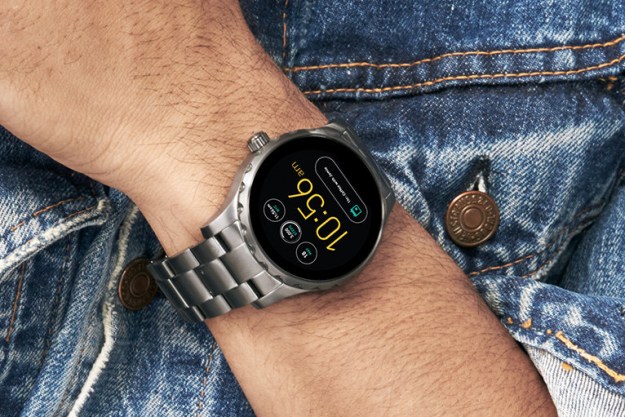The update that graced Moto 360 smartwatches yesterday was not an isolated rollout — it’s the first in a series of promised Android Wear updates detailed by Google in a blog post last month. Google made it official this morning: The LG G Watch, Samsung Gear Live, and Motorola Moto 360 are slated to receive the firmware beginning today. The new version of Android Wear counts offline music playback, new Bluetooth pairing capabilities, and GPS support among its many additions.
The level of polish is impressive — the menu derives its background color from album art, and indicates taps with a subtle, shadowy highlights.
It’s clear that improving the music experience was foremost on the Google engineers’ minds. In previous incarnations of Android Wear, divesting a wearable from your smartphone was largely pointless. The smartwatch relied on the companion application for practically everything. Now, if you just want to jam to a few tunes while exercising without the bulk of a handset slowing you down, you can do so with Play Music. Pinned (i.e. downloaded) music can be stored on your watch and played back on any Bluetooth audio device.
Related: Android Wear vs. Apple Watch: Which one will wow your wrist?
The catch is that offline music playback only works within the Google ecosystem, so you’ll need to use Play Music to take advantage of the feature. Other apps will benefit from the refined controls, though. Wear’s new music and audio interface, which appears when audio playback is in progress, consolidates forward skip, backward skip, and volume adjustment buttons into a single screen. The level of polish is impressive — the menu derives its background color from album art, and indicates taps with a subtle, shadowy highlights.
Related: Android Wear update will bring GPS, watch faces and offline music
Unless they’re willing to pony up money for the new Sony SmartWatch 3, current Android Wear users will miss out on the new software’s final headliner: GPS support. It’s another feature aimed at making the wearables more useful beyond the tether. It allows apps like Golfshot and MyTracks to leverage internal hardware for activities reliant on location data. We weren’t able to test this on our Moto 360, but we’ll give it a whirl when we get our hands on a SmartWatch 3.
If you’re awaiting the update, be patient — it’s rolling out to devices in stages over the next few days. For complete details, check out the Google post.


